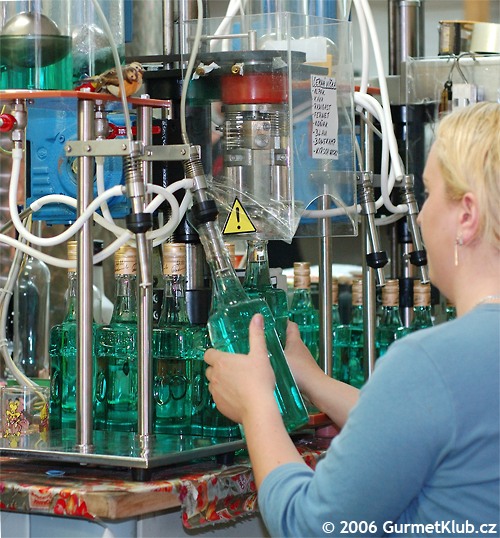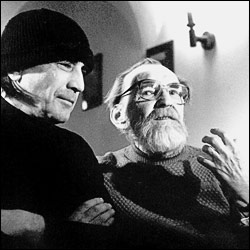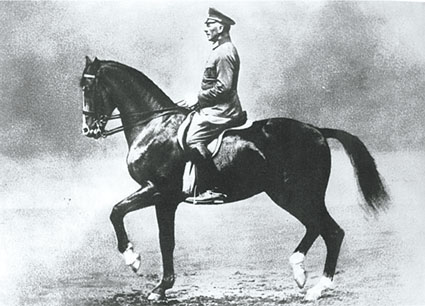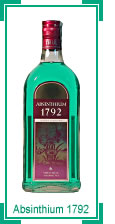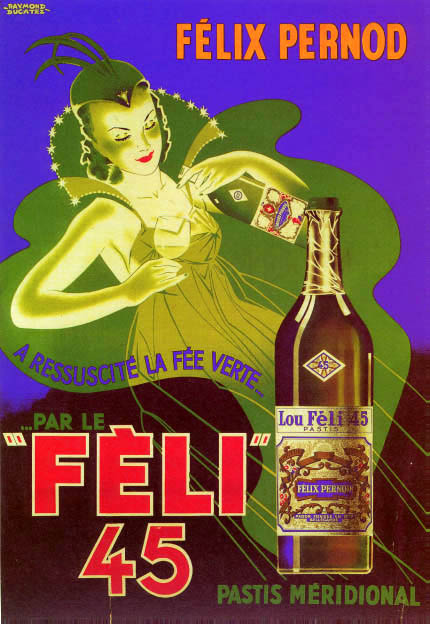
Thujone free fee verte? It’s been tried before and is nothing new, but they didn’t call it absinthe! Here’s the long awaited comment from Lucid:
What is the difference between Grande Wormwood and Southernwood (or Southern Wormwood)?
Lucid contains a full measure of Grande Wormwood (Artemisia absinthium). By contrast, other products with a claimed relationship to Absinthe contain Southernwood (Artemisia Abrotanum – sometimes referred to as Southern Wormwood). Southernwood bears little resemblance to Grande Wormwood and has a completely different flavor and chemistry. Genuine Absinthe, such as the Absinthe made during the Belle Époque period in France, has always been made with Grande Wormwood as a key ingredient. In fact, the word “Absinthe” itself is derived from the scientific name for Grande Wormwood- Artemisia absinthium.
How were you able legally to import Lucid into the US if Wormwood is illegal?
Wormwood is not illegal as long as the finished product meets applicable standards for content. We found that by adhering to the strict techniques used over a century ago, the result was not only a genuine, historically accurate product, but a product that also happens to meet US requirements relating to alcoholic beverages.
Is Wormwood responsible for hallucinations or is this a myth?
The reputation of Wormwood as a hallucinogen is largely based on the politically motivated publicity that was given to Thujone, a chemical contained in Wormwood, back in the late 1800’s and early 1900’s. However, modern studies have conclusively demonstrated that humans are unable to detect (or experience any effects from) the presence of Thujone when consumed in test samples containing relevant concentrations. Moreover, thanks to T.A. Breaux’s modern testing of vintage bottles of Absinthe from over 100 years ago, we now know that, just as with Lucid, most of the high quality Absinthes from the 1800’s would meet today’s US standards for content, further discrediting the theory that Thujone had any real relevance to the Absinthe experience. In any event, we believe that if you consume Lucid responsibly and in moderation, there should be no unusual effects.
Does Lucid contain Thujone?
Lucid has been tested and it meets US and EU standards for content. It is worth noting that using modern equipment, T.A. Breaux, the distiller of Lucid, has analyzed dozens of bottles of traditional, high-quality vintage Absinthe from the Belle Époque period and has determined that quality Absinthe that was properly made typically did not have any significant Thujone content- even 100 years ago.
🙂 Hmm…are you thinking what I’m thinking? This is all based upon one serious report made by Dr Dirk Lachenmeier and an extract follows:
Habitual abuse of the wormwood spirit absinthe was described in the 19th and 20th centuries as a cause for the mental disorder ‘‘absinthism’’ including the symptoms hallucinations, sleeplessness and convulsions.
A controversial discussion is going on if thujone, a characteristic component of the essential oil of the wormwood plant Artemisia absinthium L., is responsible for absinthism, or if it was merely caused by chronic alcohol intoxication or by other reasons such as food adulterations. To ascertain if thujone may have caused absinthism, absinthes were produced according to historic recipes of the 19th century. Commercial wormwood herbs of two different manufacturers, as well as self-cultivated ones, were used in a concentration of 6 kg/100 l spirit. In addition, an authentic vintage Pernod absinthe from Tarragona (1930), and two absinthes from traditional small distilleries of the Swiss Val-de-Travers were evaluated. A GC–MS procedure was applied for the analysis of a- and b-thujone with cyclodecanone as internal standard. The method was shown to be sensitive with a LOD of 0.08 mg/l.The precision was between 1.6 and 2.3%, linearity was obtained from 0.1 to 40 mg/l (r = 1.000).
After the recent annulment of the absinthe prohibition all analysed products showed a thujone concentration below the maximum limit of 35 mg/l, including the absinthes produced according to historic recipes, which did not contain any detectable or only relatively low concentrations of thujone (mean: 1.3 Æ 1.6 mg/l, range: 0–4.3 mg/l). Interestingly, the vintage absinthe also showed a relatively low thujone concentration of 1.8 mg/l. The Val-de-Travers absinthes contained 9.4 and 1.7 mg/l of thujone.
In conclusion, thujone concentrations as high as 260 mg/l, reported in the 19th century, cannot be confirmed by our study. With regard to their thujone concentrations, the hallucinogenic potential of vintage absinthes can be assessed being rather lowbecause the historic products also comply with today’s maximum limits derived to exclude such effects. It may be deduced that thujone plays none, or only a minor role in the clinical picture of absinthism.
Quite a deduction based upon 3 old bottles and a re run using traditional absinthe recipes! An interesting question would be how these absinthes, that were supplied to Dr Lachenmeier, were produced, and by whom. According to Lucid, a skilled distiller like Ted Breaux is perfectly able to produce an absinthe which does not register thujone content when the FDA test is applied. The distiller knows that using particular parts of the plant, harvesting time and climatic conditions have a dramatic effect upon thujone content in artemisia absinthium. Dr Lachmeier should also consider the effects of time on the thujone molecule in those pre ban bottles.



